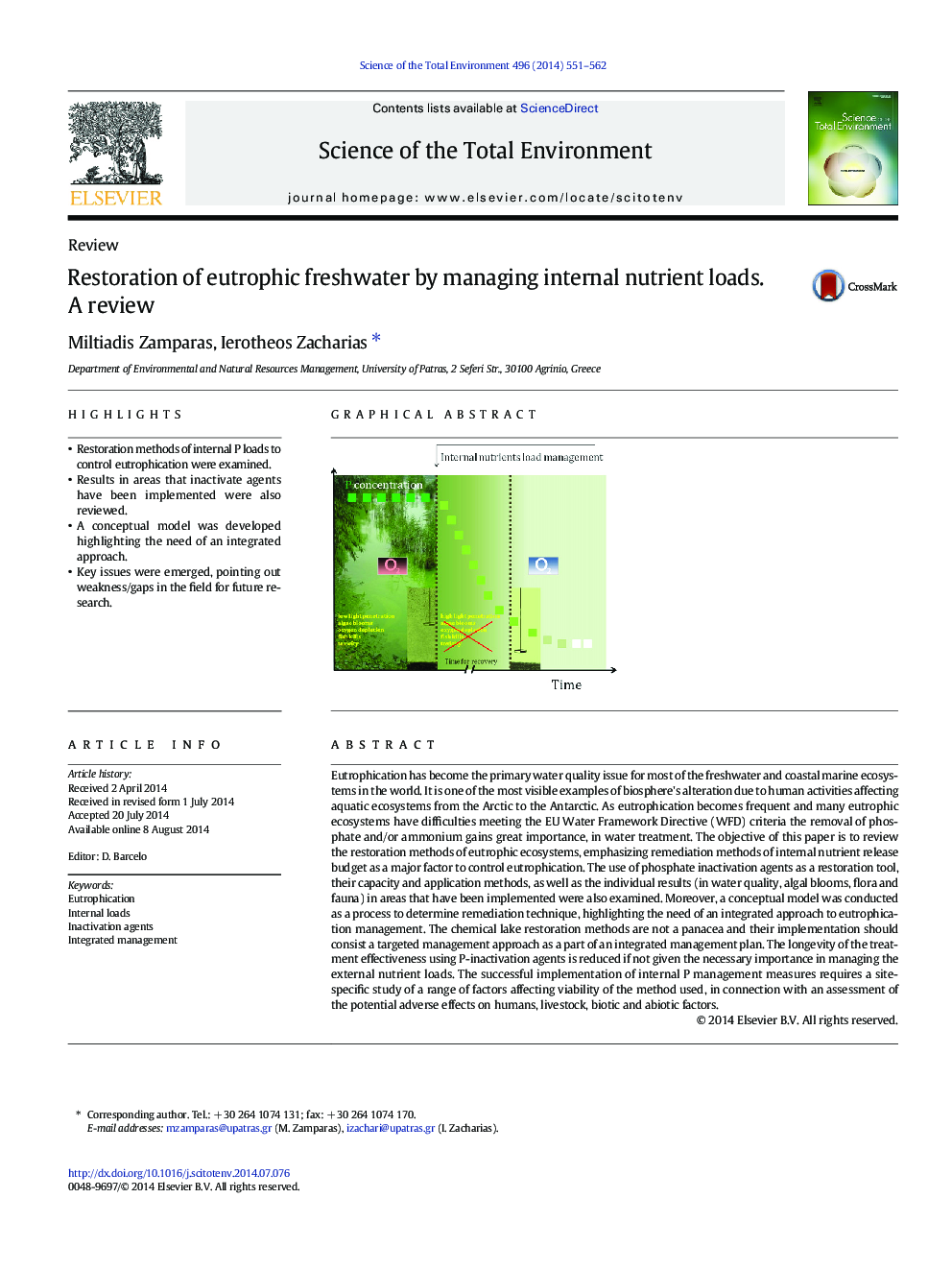| کد مقاله | کد نشریه | سال انتشار | مقاله انگلیسی | نسخه تمام متن |
|---|---|---|---|---|
| 6329507 | 1619776 | 2014 | 12 صفحه PDF | دانلود رایگان |
- Restoration methods of internal P loads to control eutrophication were examined.
- Results in areas that inactivate agents have been implemented were also reviewed.
- A conceptual model was developed highlighting the need of an integrated approach.
- Key issues were emerged, pointing out weakness/gaps in the field for future research.
Eutrophication has become the primary water quality issue for most of the freshwater and coastal marine ecosystems in the world. It is one of the most visible examples of biosphere's alteration due to human activities affecting aquatic ecosystems from the Arctic to the Antarctic. As eutrophication becomes frequent and many eutrophic ecosystems have difficulties meeting the EU Water Framework Directive (WFD) criteria the removal of phosphate and/or ammonium gains great importance, in water treatment. The objective of this paper is to review the restoration methods of eutrophic ecosystems, emphasizing remediation methods of internal nutrient release budget as a major factor to control eutrophication. The use of phosphate inactivation agents as a restoration tool, their capacity and application methods, as well as the individual results (in water quality, algal blooms, flora and fauna) in areas that have been implemented were also examined. Moreover, a conceptual model was conducted as a process to determine remediation technique, highlighting the need of an integrated approach to eutrophication management. The chemical lake restoration methods are not a panacea and their implementation should consist a targeted management approach as a part of an integrated management plan. The longevity of the treatment effectiveness using P-inactivation agents is reduced if not given the necessary importance in managing the external nutrient loads. The successful implementation of internal P management measures requires a site-specific study of a range of factors affecting viability of the method used, in connection with an assessment of the potential adverse effects on humans, livestock, biotic and abiotic factors.
167
Journal: Science of The Total Environment - Volume 496, 15 October 2014, Pages 551-562
